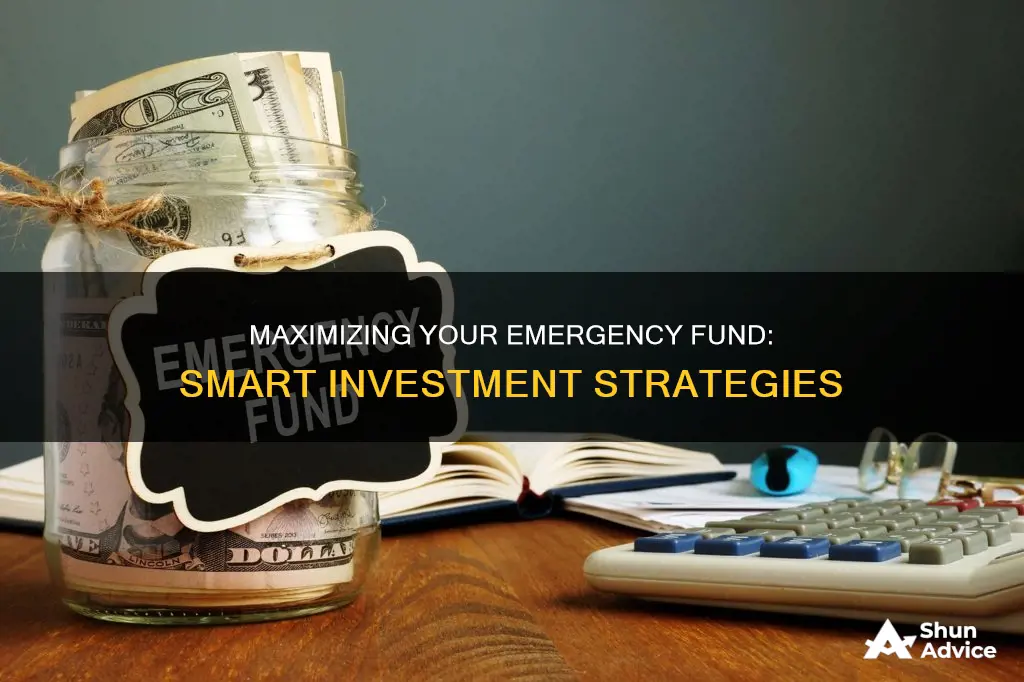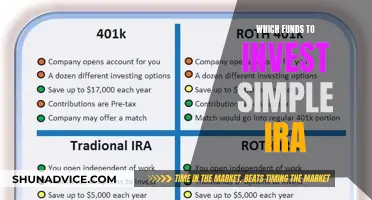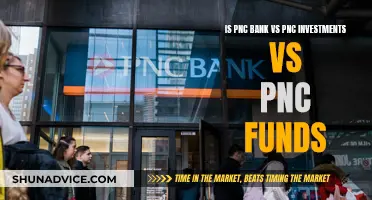
An emergency fund is a crucial financial safety net to prepare for unforeseen events such as job loss, illness, or unexpected expenses. It is recommended to have three to six months' worth of living expenses or income set aside in a dedicated account. This provides peace of mind, financial stability, and the ability to cover costs without dipping into other savings or resorting to high-interest loans.
When building an emergency fund, it is essential to choose the right type of account, separate from daily transactions, with low fees, easy access, and the ability to generate interest. High-yield savings accounts and money market accounts are recommended for their competitive interest rates, liquidity, and protection by the Federal Deposit Insurance Corp. (FDIC) or National Credit Union Association (NCUA).
It is also important to start with a realistic amount and gradually increase savings over time. Automating savings, eliminating unnecessary expenses, and taking advantage of opportunities to boost the fund are effective strategies.
This introduction provides an overview of the importance of emergency funds, account options, and strategies for building a robust financial cushion.
| Characteristics | Values |
|---|---|
| Accessibility | Easy to access, liquid, no/low withdrawal fees, separate from the account used for day-to-day transactions |
| Safety | No chance of disappearing, FDIC or NCUA coverage, low-risk, no investment loss |
| Interest | Competitive rate of return, interest rates should be higher than inflation, money grows faster |
What You'll Learn

Savings accounts
- High-yield savings account: These accounts are a good option as they offer higher interest rates than traditional savings accounts. Leading high-yield savings accounts can earn over 2% annual percentage yield (APY). However, you won't be able to withdraw funds in person as online banks don't have physical branches.
- Money market account: Money market accounts are similar to high-yield savings accounts but sometimes come with a debit card and check-writing capabilities. They usually require a larger minimum deposit and can be opened at most local or online banks.
- Traditional bank savings account: You can also keep your emergency fund in a traditional savings account at a brick-and-mortar bank. This option provides easy access to your funds but may offer lower interest rates compared to online accounts.
- Bank or credit union account: You could open a dedicated account at your bank or credit union, keeping your emergency fund separate from your other savings. Credit unions are often restricted to certain communities or geographic areas, while banks are typically open to everyone.
- Online savings account: Online-only savings accounts offer competitive interest rates and are insured by the FDIC or NCUA. However, transfers from these accounts may take one to two days, so it's a good idea to keep some funds in an account with immediate access.
When choosing a savings account for your emergency fund, look for options that provide easy access to your money without penalties. It's also essential to consider the interest rates and any fees associated with the account. By choosing an account with a competitive interest rate, you can help maintain your purchasing power and grow your emergency fund over time.
Mutual Funds vs Property: Where Should You Invest?
You may want to see also

High-yield savings accounts
When choosing a high-yield savings account, look for one that is separate from your daily bank account, so you're not tempted to spend your emergency fund. You should also consider the interest rate, accessibility, and any fees or penalties for withdrawals.
Some high-yield savings accounts offer interest rates as high as 5% or more, which can help your emergency fund grow faster. These accounts often have a limit of six withdrawals per month to prevent you from spending your emergency fund.
Online-only banks tend to offer higher interest rates than traditional banks, so consider opening an account with an online financial institution. These accounts usually offer no minimum deposit, no fees, and unlimited deposits and withdrawals.
UK Investors: Accessing US Mutual Funds
You may want to see also

Tax-free savings accounts
How TFSA Works
A TFSA is an all-purpose savings account that allows your savings to grow over time, tax-free. You can withdraw your money whenever you need it without facing any penalties. This makes it ideal for emergency funds as you can easily access your money in case of unexpected expenses.
Investment Options
Your TFSA is a registered account that can hold a variety of savings and investment products. This includes cash, GICs, mutual funds, stocks, and bonds. You can choose the investment options that align with your financial goals and risk tolerance.
Contribution Limits
As of January 2024, the annual contribution limit for TFSA is $7,000. You can also carry forward any unused contribution room from previous years. This means if you haven't contributed the maximum amount in past years, you can add those amounts to this year's contribution.
Advantages of TFSA for Emergency Funds
TFSA offers several benefits that make it a suitable option for building an emergency fund:
- Tax-Free Growth: Your savings in TFSA grow tax-free, maximizing your returns.
- Flexibility: You can withdraw your money at any time without penalty, providing easy access to funds in case of emergencies.
- Variety of Investment Options: TFSA offers a range of investment options, allowing you to choose the ones that fit your financial goals and risk tolerance.
- Carry Forward Contribution Room: You can carry forward any unused contribution room, providing flexibility if you need to prioritize other financial goals.
Considerations
While TFSA offers many benefits, there are a few things to keep in mind:
- Contribution Limits: Be mindful of the contribution limits and carry forward rules to ensure you don't exceed the allowed contribution room.
- Investment Risk: Some investment options within TFSA, such as stocks and mutual funds, carry a higher risk. Carefully consider your risk tolerance and diversify your investments to mitigate risk.
- Opportunity Cost: While TFSA offers easy withdrawals, consider whether you're foregoing potential higher returns by investing in other vehicles with longer-term commitments.
In conclusion, Tax-Free Savings Accounts (TFSA) can be a great option for building an emergency fund due to their tax-free growth, flexibility, and variety of investment options. However, it's important to consider the contribution limits, investment risk, and opportunity cost associated with TFSA.
Tiger Global Hedge Fund: Strategies for Investment Access
You may want to see also

Money market deposit accounts
Money market accounts are a mix between a checking and savings account. Some banks offer money market accounts that come with a debit card and/or check-writing privileges, which gives you instant access to your funds. You can also make a certain number of free withdrawals per month.
Money market accounts are similar to high-yield savings accounts, but they have some differences. Money market accounts generally require a larger minimum deposit to open an account. Some banks have tiered interest rates based on account balances.
Federal law limits the number of withdrawals or transfers you can make from a money market account to six per month. If you exceed this limit, you are likely to face a fee from your bank or credit union. However, if your money market account is being used only in case of an emergency, this shouldn't be an issue.
Compared to a savings account, a money market account may have a higher minimum balance and withdrawals may be limited. For instance, you may be allowed unlimited ATM withdrawals, but checks and debit card purchases could be limited. The average APY for money market accounts is 0.64%.
Money market accounts are a good option for your emergency fund as they are easily accessible, provide competitive interest rates, and are insured by the FDIC or NCUA.
Invest in a Roth IRA: A Beginner's Guide to Retirement Planning
You may want to see also

High-interest savings accounts
When choosing a high-interest savings account, look for one that is separate from your day-to-day transactions, has low or no transaction fees, allows you to make penalty-free withdrawals, and generates interest on your savings. Online financial institutions often offer the best interest rates, with some offering rates as high as 2% with no minimum deposit, fees, or charges for unlimited deposits and withdrawals.
It's important to note that transfers from a savings account may take one to two days, so it's a good idea to keep a portion of your emergency fund in an account with more immediate access, such as a money market deposit account. This type of account often includes benefits like a debit card and the ability to write checks, while still offering insurance coverage and competitive interest rates.
By choosing a high-interest savings account for your emergency fund, you can be confident that your money is earning a strong return while remaining easily accessible in case of unexpected expenses.
Retirement Mutual Funds: Choosing the Right Investment for Your Future
You may want to see also
Frequently asked questions
It's best to keep your emergency fund in a savings account that's separate from your everyday spending account. This could be a high-interest savings account, which will help your money grow faster, or a standard savings account, which is likely to have minimal or no interest but will guarantee your money is easily accessible.
Most financial experts recommend saving between three and six months' worth of expenses in your emergency fund. This will help you to cover any unexpected costs, such as urgent medical bills or home repairs, without having to rely on credit cards or high-interest loans.
It's a good idea to save a small amount regularly. You could set up an automatic transfer from your everyday account to your emergency fund so that a set amount is paid in at regular intervals. This will help you build up your savings without having to think about it.
If you're facing a financial emergency, don't hesitate to use your emergency fund. This is exactly what it's there for. Just make sure that the expense is something you can't put off and that it's not already covered by your regular budget.







